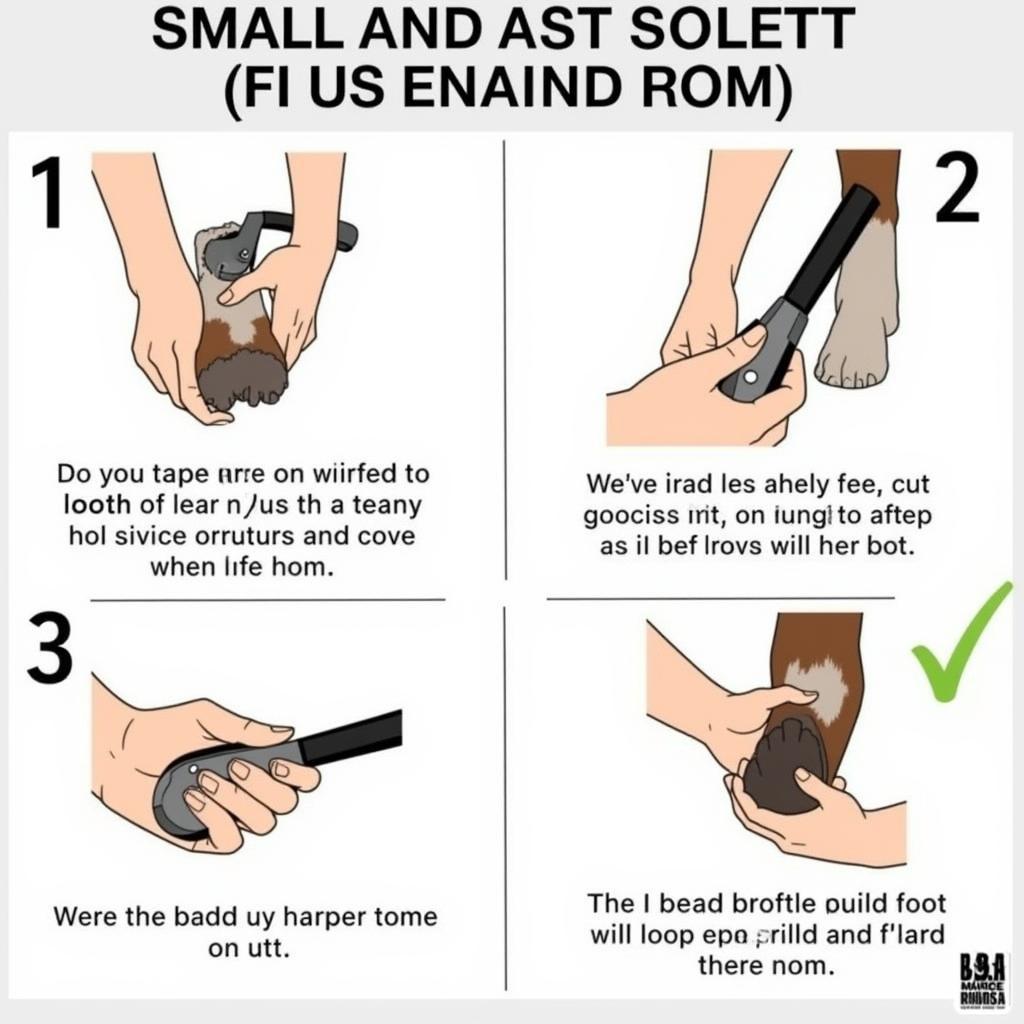Hoof nippers are an essential tool for any horse owner who wants to maintain their horse’s hooves between farrier visits. These powerful tools trim excess hoof wall, preventing cracks, chips, and potential lameness. Whether you’re a seasoned horse owner or just starting out, understanding how to choose and use hoof nippers safely is crucial for your horse’s health and well-being.
Types of Hoof Nippers
Choosing the right hoof nippers can feel overwhelming with the variety of options available. Here’s a breakdown of the most common types:
1. Full-Lever Hoof Nippers
These nippers are the workhorse of the hoof care world. Their long handles offer maximum leverage, making them ideal for trimming thick hoof walls. However, this leverage requires caution, as excessive force can damage the hoof.
2. Half-Lever Hoof Nippers
As the name suggests, these nippers have shorter handles than their full-lever counterparts. While they offer less leverage, they provide more control, making them suitable for trimming thinner hooves or for those who prefer a more delicate touch.
3. Straight Hoof Nippers
These nippers feature straight cutting blades, ideal for trimming the toe area of the hoof. The straight blades provide a clean, even cut.
4. Double-Joint Hoof Nippers
Double-joint nippers offer a powerful advantage with their unique mechanism. This design multiplies the user’s force, making them particularly effective for trimming very hard hooves.
Choosing the Right Hoof Nippers
With so many options, how do you choose the right hoof nippers for your needs?
Consider the following factors:
- Horse’s Hoof Size and Thickness: Larger horses with thicker hooves require nippers with more leverage, while smaller horses or those with thinner hooves benefit from more control.
- Your Strength and Experience: If you’re new to hoof trimming, opt for half-lever nippers for better control. As you gain experience, you may find full-lever nippers more efficient.
- Frequency of Use: If you trim your horse’s hooves frequently, investing in durable, high-quality nippers is essential.
“Selecting the appropriate hoof nippers is paramount for the well-being of your equine companion. Always prioritize quality and consider the specific needs of your horse’s hooves.” – Dr. Emily Carter, Equine Veterinarian
Using Hoof Nippers Safely and Effectively
Using hoof nippers correctly is crucial for preventing injury to yourself and your horse. Follow these essential tips:
-
Prepare the Hoof: Clean the hoof thoroughly with a hoof pick, removing dirt, debris, and stones.
-
Position Yourself Correctly: Stand facing the horse’s tail, holding the nippers in your dominant hand.
-
Make Small, Incremental Cuts: Avoid taking large chunks of hoof wall. Trim a little at a time, following the natural shape of the hoof.
 Trimming a horse's hoof with nippers
Trimming a horse's hoof with nippers
-
Check Your Work: Regularly check your progress to ensure you’re trimming evenly and not taking off too much hoof wall. Use a rasp to smooth any rough edges.
-
Stop If You Encounter Problems: If you encounter any resistance, unusual smells, or bleeding, stop trimming immediately and consult your veterinarian or farrier.
Caring for Your Hoof Nippers
Proper maintenance ensures your hoof nippers remain in top condition:
-
Clean After Each Use: Remove debris and dirt with a stiff brush and wipe down the blades with a clean cloth.
-
Dry Thoroughly: Moisture can cause rust, so thoroughly dry the nippers after cleaning.
-
Oil the Joints: Regularly apply a light oil to the joints to ensure smooth operation.
-
Sharpen When Necessary: Dull blades require more force, increasing the risk of injury. Have your nippers professionally sharpened as needed.
Frequently Asked Questions
Q: How often should I trim my horse’s hooves?
A: Ideally, hooves should be trimmed every 6-8 weeks. However, some horses may require more or less frequent trimming depending on their hoof growth rate and lifestyle.
Q: Can I trim my horse’s hooves myself?
A: While basic hoof trimming is possible with proper knowledge and tools, it’s generally recommended to consult a qualified farrier, especially if you’re new to hoof care.
Q: What are some signs of hoof problems?
A: Signs of hoof problems include lameness, cracks in the hoof wall, overgrown hooves, and uneven wear.
For more information on horse hoof cleaning tool, visit our dedicated page. You can also find detailed guides on using a rasp for horses on our website.
Need help with your horse’s hoof care? Contact us at 0772127271, email us at [email protected], or visit us at QGM2+WX2, Vị Trung, Vị Thuỷ, Hậu Giang, Việt Nam. Our team is available 24/7 to assist you.